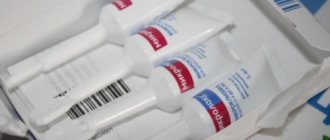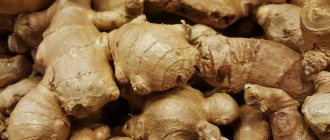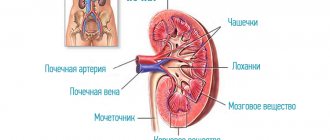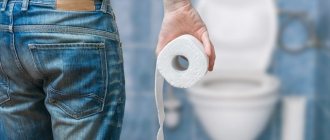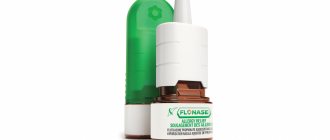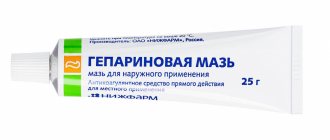If you are planning an appointment with a proctologist
, then you need to prepare the rectum accordingly, that is, clean it by giving a cleansing enema. If you have severe pain or quite heavy bleeding, then you do not need to give an enema before the initial medical examination. Do not injure the sore areas again. The doctor will conduct a minimal instrumental examination (anoscopy), and without this preparation it will be enough to have a “chair” before the examination. A cleansing enema is performed no later than 2 hours before examination by a proctologist, usually twice. Also, you should not eat foods that cause flatulence the day before. If you have an appointment in the evening, but there is no way to prepare during the day, then a cleansing enema can be given after the morning “stool”.
What is needed to perform an enema?
To perform a cleansing enema,
use an Esmarch mug (it can be bought at almost any pharmacy). This is a tank (glass, enamel or rubber) with a capacity of 1.5-2 liters. At the bottom of the mug there is a nipple onto which a thick-walled rubber tube is placed. The length of the tube is about 1.5 m, the diameter is 1 cm. The tube ends with a removable tip (glass, plastic) 8-10 cm long. The tip must be intact, with smooth edges. It is preferable to use plastic tips, since a glass tip with a chipped edge can seriously injure the intestine. Next to the tip on the tube there is a tap that regulates the flow of fluid into the intestines.
For enemas, use drinking water. The water temperature is about 37.7-38 degrees. For children, it is better to use only boiled water.
Contraindications
Medicine does not discourage doing an enema on your own, since the procedure is not dangerous. When performed correctly, it is not capable of causing harm, but there are a number of diseases, pathologies and dysfunctions, the presence of which in a person is an absolute contraindication for its implementation. Below they will be discussed in more detail:
- Postoperative period. The first few days (and sometimes weeks) after surgery performed on the gastrointestinal tract, it is strictly forbidden to do enemas. This is due to the mechanical effect on the sutures and healing tissues, the likelihood of their divergence in this case greatly increases
- Erosive formations, ulcerations of mucous membranes and perforations in the intestines. Pathologies are extremely sensitive to mechanical, chemical and thermal effects. If you ignore the warnings of doctors, you can provoke internal bleeding
- Fissures in the anus, intestinal prolapse and hemorrhoids. The procedure can provoke an exacerbation, aggravating the course of the disease with the appearance of complications
- Bleeding from the anus. If such occur, their causes may be ailments of other organs of the gastrointestinal tract (besides the intestines), but even in this case it is prohibited to do an enema
- The presence of inflammatory processes in the intestines or other abdominal organs. Experts do not recommend doing the procedure in the presence of inflammatory processes of any etiology.
- Neoplasms in the small and large intestines. Enemas are contraindicated if polyps, fibroids or various types of tumors are diagnosed. A large volume of water introduced into the intestines can injure them and provoke degeneration into malignant formations
- Thrombosis of mesenteric vessels. Their blockage leads to the development of necrotic processes and subsequent tissue death. This process can significantly speed up the process.
Administration of an enema
Lie on the bed (couch) closer to the edge on your left side with your legs bent and pulled towards your stomach.
Place an oilcloth (plastic film) under your buttocks, and lower the free edge of it into a bucket in case you cannot hold water. Pour 1-1.5 liters of water at room temperature into Esmarch's mug, lift it up to a height of 1-1.5 m and lower the tip down to release a small amount of water and along with it air from the tube. Fill the tube (drain some liquid from the tube), then, without lowering the mug, close the valve on the rubber tube. Check if the tip is broken, lubricate it with Vaseline and, spreading the buttocks, insert the tip into the anus with light rotational movements. The first 3-4 cm, insert the tip towards the navel, then another 3-4 cm - parallel to the tailbone. If there are obstacles and the tube rests on the intestinal wall or hard stool, remove it 1-2 cm and open the tap. Water under pressure will enter the rectum. Almost immediately there will be a feeling of “fullness” in the intestines, an urge to “stool”. At these moments, you need to reduce the flow rate of liquid from the mug by closing the tap on the tube or squeezing it. Gentle circular stroking of the abdomen will help reduce discomfort. If the tip is clogged with feces, it should be removed, cleaned and reinserted. If your rectum is filled with stool, try flushing it out with a stream of water. Esmarch's mug does not need to be completely emptied. Leaving a little water at the bottom to prevent air from entering the intestines, close the valve that regulates the flow of liquid and remove the tip. Place a pre-prepared pad (cloth, repeatedly folded toilet paper, etc.) on the perineum.
It is advisable to hold the water for 10 minutes. To do this, lie on your back and breathe deeply. Calm the feeling of fullness in the stomach with stroking. Walk around with the water injected or lie on your stomach. A plain water enema does not always lead to bowel movements. To enhance its effect, you can add 1/2 cup of vegetable oil to the water. When administering a cleansing enema, you need to ensure that no more than 1.5-2 liters of liquid are administered at a time.
If you need to give two enemas in a row, you should maintain an interval of 30-40 minutes between them, making sure that the rinsing water from the first enema has completely drained. After use, the tip is washed well with soap under running warm water and boiled.
Composition of medicinal solutions for enemas
Many different solutions can be used for enema. They are mainly used to cleanse the intestines and stimulate its motility. The composition of enema solutions can be simple - water, or it can consist of various components. The most common of them are presented in the table below.
| Solution | What is included | Peculiarities |
| Oily | Medicines or herbal decoctions. | Used for severe constipation of spastic etiology. Do it at night. Unlike other enemas, the effect of oil enemas begins 12 hours after the procedure. |
| Soapy | Shavings of baby soap with glycerin. | — |
| Hypertensive | Table salt or potassium permanganate. | Taken to remove excess fluid during edema, most often with edema of the meninges. |
| Sour | Lemon juice or vinegar. | — |
| Sodas | Table salt. | — |
| Enema Ognev | Hydrogen peroxide, glycerin, soap shavings. All this should be in a 1:1:1 ratio. . | It is used only for complete atony of the large intestine. |
| Drip | Several drugs. | Used for severe dehydration of the human body, when a quick effect from a large number of drugs is needed. |
| Nutritious | Glucose, amino acids with the addition of 8-10 drops of opium. | Used for severe dehydration, when the body urgently needs nutrients. Up to 4 procedures can be performed per day. But if the body requires a large volume of components, then the drip method is used. |
| Starch | Starch and drugs. | Starch enemas are done hot (40-42 degrees). They are used for colitis, since starch can coat the intestinal walls. |
The solution is selected by a specialist based on the patient’s current condition, the degree of filling of the intestines with feces and age.
How to prepare saline and soda solutions
{banner_banstat1}
Saline solution gently removes toxic substances and disinfects the intestinal cavity. To prepare a medicinal solution, you need to dilute a teaspoon of kitchen salt in 1.5 liters of water. After this, the resulting liquid is filtered through several layers of gauze and used for its intended purpose.
Soda solution helps soften fecal stones and remove them from the body. To prepare such a medicine for an enema, you should take two tablespoons of baking soda without topping and dilute it in one and a half liters of warm water. For the solution to be as effective as possible, add a tablespoon of glycerin or sunflower oil to the water to soften the intestinal lining.
A solution with the simultaneous use of soda and salt helps a lot. It is also recommended to add oil or glycerin to this cleaning liquid.
You can use a solution of pharmaceutical rehydron to cleanse the intestines, which is prepared according to the attached instructions.
What is an Esmarch mug?
This manipulation of intestinal stimulation has been used since ancient Egypt. Doctors of that time used a special device for introducing water and various medicines into the intestines to relieve constipation, cleanse the digestive tract, get rid of intestinal worms, treat fever and other diseases.
Today, Esmarch's mug is used for the procedure. The device was invented by Friedrich Esmarch (a German surgeon) more than 200 years ago. Since then, its appearance has changed little, although the possibility of using new, modern materials in its manufacture has made its own adjustments.
The main advantage of the Esmarch mug over a regular enema is the presence of an open neck, which facilitates the process of filling the container with the medicinal composition. The product is sealed, convenient to use and belongs to the category of reusable medical products. The device can be used repeatedly both in a hospital setting and at home. To do this, after the manipulation, it (the mug and tip) must be disinfected with a hot solution of soda, potassium permanganate or hydrogen peroxide, acetic acid. The inner surface of the container does not stick together, and the product itself is durable and safe to use.
Possible complications and consequences
Manipulation with the help of an Esmarch mug, despite its apparent simplicity and the possibility of doing it independently at home without the help of a medical professional, is still a medical procedure, a third-party intervention in the functioning of the body. This means that it requires certain indications, consultation with a specialist, and a doctor’s prescription. Failure to follow the procedure or the introduction of unnecessary or even harmful substances into the body can lead to very sad consequences:
- leaching of beneficial intestinal microflora (dysbiosis);
- increased blood pressure, cerebral edema with the introduction of excessively hot liquid, which will be quickly absorbed into the circulatory system, increasing the total blood volume;
- the tip can damage an intestinal polyp or hamorroidal node, which will lead to bleeding;
- intoxication of the body caused by the absorption of dissolved toxins from the intestines;
- “lazy bowel syndrome”, as a result of regular enema for bowel movements.
By strictly following the doctor’s recommendations, not using the procedure for more than 7-10 days in a row, and not “experimenting” with the injected solutions, you can significantly reduce the likelihood of complications.
Patient reviews about the siphon enema service
- Anna: I suffered from constipation for a long time. Neither pills, nor drops, nor folk remedies helped. The doctor prescribed a siphon enema. At first I was afraid and didn’t want to, but after the first time I felt much better: my stomach didn’t hurt, it became softer. 3 procedures were enough for me, after which my intestines started working again. I didn't feel any more discomfort.
- Mikhail: We were on holiday with friends. In the morning I felt bad, I didn’t pay attention at first, but in the evening it got worse and my temperature rose. I had to call a doctor. I was admitted to the clinic with a diagnosis of severe intoxication. Doctors prescribed a siphon enema. I didn’t want to undergo the procedure for a long time, but my condition forced me to. Everything went easily and quickly enough. After the first time I felt extraordinary relief. After the 4th procedure, I was discharged, and I felt excellent.
- Maria: She was being kept in the clinic. She was due to give birth any day now. But I wasn’t feeling well, and I was also overcome by constipation. The doctor prescribed a siphon enema and went for the procedure. After the first enema, my body became significantly lighter and I felt relief. Before giving birth, they did another one - she gave birth quickly and easily.
If you feel discomfort in the intestines or have severe constipation, do not self-medicate. There is no need to take laxatives or try to do an enema yourself. You can not only aggravate the situation with poor knowledge, but also cause damage that will later result in irreversible consequences or death. Forget about being embarrassed in front of the doctor. An enema is a natural procedure and there is nothing to be ashamed of. The sooner treatment begins, the fewer difficulties and complications there will be.
Indications for use
The range of situations in which a cleansing enema may be required is quite wide. Here are the most common:
- Prolonged absence of defecation. The procedure is effective for spastic, atonic and any other constipation (with the exception of intestinal obstruction). With its help you can quickly and painlessly get rid of fecal debris.
- Preparation for examination or surgery. Staging is carried out before X-ray, endoscopic (including capsule) or laparoscopic diagnostic procedures, surgical operations on the digestive/genitourinary systems, pelvic organs
- Intoxication and poisoning. An enema can quickly and effectively rid the body of alcohol, drugs and food toxins.
- Preparing for childbirth. It is known that after the onset of contractions, not all women can control the functioning of the anal sphincter, which can cause involuntary bowel movements during childbirth.
- Before administering a medicinal or nutritional enema. When performing them, the active ingredients must be administered into a clean intestine, this is how maximum effect is achieved.
A cleansing procedure using an enema is an excellent alternative to laxatives of synthetic and natural origin; it does not require financial costs and does not take much time, but it has a number of contraindications that are an obstacle to its implementation. Anyone who wants to perform it outside the hospital should carefully read them.
How to prepare a solution of potassium permanganate
{banner_banstat2}
Potassium permanganate is a versatile substance that is used for various medicinal purposes.
A weak solution of potassium permanganate is indicated for poisoning, both for washing the stomach and intestines. To prepare the medicinal composition, you need to dissolve 5-6 grains of potassium permanganate in a small volume of water, and then pour the resulting concentrate into the total volume of liquid for the procedure. First, the solution is filtered through several layers of gauze so that undissolved crystals do not fall on the intestinal mucosa, otherwise there may be a burn.
What solutions can be used
The solution for a cleansing enema can be different; in some cases, they take ordinary pre-boiled water, cooled to room temperature. The following liquids are most often used to cleanse the intestines:
- a weak solution of kitchen salt;
- baking soda solution;
- faint pink solution of manganese;
- decoction of chamomile;
- decoction of herbs and yarrow flowers.
Prepare the solution immediately before the manipulation; the water used for the cleansing enema must be boiled.
Any enema solutions should be at room temperature. Very hot liquid will lead to strong absorption of toxins, and cold liquid can provoke an inflammatory process.
